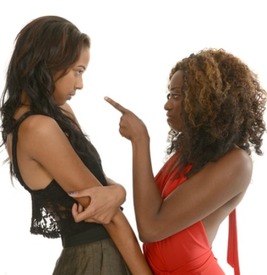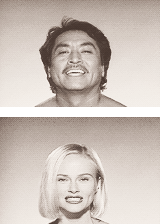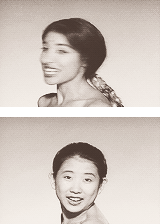
Let’s say at a school of 800 students, 700 are tall, skinny, blonde and middle-class, and 100 are short, stocky, brunette and poor. The 700 are obviously the dominant. The 700 reject the 100 because they look different and think they’re less-than because they cannot afford the same lifestyle. It’s emotionally communicated to the 100 that being short, stocky, brunette and poor are negative traits, and they begin to have low self-esteem and self-resentment. Self-resentment leads them to dislike, bash and identify flaws in their own kind because they represent what they wish they weren’t. Parts of the 100 try to lose weight and dye their hair to become more acceptable to the 700; these 100 are either viewed by their own as traitors or put on a pedal-stool for more closely resembling the 700. Those who are accepted (or tolerated, rather) by the 700 increase their hatred towards the rest of the 100 to remain in the circle. Those 100 who don’t care to be accepted by the 700 embrace who they are, but create standards and expectations as to what 100-ness means. Others who don’t meet the criteria for “real 100-ness” are deemed “not 100-enough” and ostracized. They now don’t fit in anywhere; 700’s hate them for being 100, and some 100’s hate them for not being “100-enough.” The 100’s are now a group of students at odds.
Social classes and categories are not evil within themselves, nor are differences. Excluding and despising others based on differences is what creates problems. For populations on the losing end of social hierarchies, it automatically creates a hostile environment of competition, jealousy, poor self-concept and “in-fighting.” My father once described black people as crabs in a bucket. Crabs crawl over each other, trying to get up the wall and out of the bucket. In the process of going up the wall, they often pull those further along down. Incidentally, they drop too and have to start all over. Even though many African-Americans (and other oppressed groups) are very aware of how centuries of prejudice, injustice and discrimination have affected relations within, it’s hard to undo what’s been psychologically learned; especially when racism is still such an impacting force. We constantly perpetuate the lies and stereotypes we’ve been taught about ourselves to each other and the world. In the case of Rachel Jeantel, we passed on the lesson-lie that dark skin is hideous and made of fun of her looks. On a personal note, through most of grade-school, I was that “100” who didn’t fit in anywhere. White kids either dismissed me or constantly highlighted my race, while black kids measured my “blackness.” I was “white” because I liked pop and rock music and wasn’t raised in the inner-city.
Again, this is a behavior pattern seen in all oppressed populations. One of my friends complained that in her workplace, the women are always secretly gossiping about one another and they try to stunt each other’s success. A higher-level executive admitted to her “They’ll [men] allow only so many spots for women to take charge. If you don’t eliminate your competition, you won’t make it.” Actress Gabrielle Union said in a recent interview that she was a “mean girl” who cut other black actresses down until she realized their “shine” didn’t dim her own, but propelled it. Another friend, who’s Latina, said she doesn’t like to socialize with other Latinos because of their dissension. I then asked “Aren’t you contributing to the separation if you shun them?” Although internal backbiting is frustrating (to say the least), we must not give up on our own and assist the division. As members of socially subordinate, “outsider” communities, to interfere with the effects of discrimination, we must constantly hold each other-and ourselves-accountable. Think before you speak and act. Analyze your biases and train of thought. Don’t believe the stereotypes and don’t live them out. Call those around you out when they say and do divisive things. It’s all easier said than done, but a conscious effort made yields results.




 RSS Feed
RSS Feed